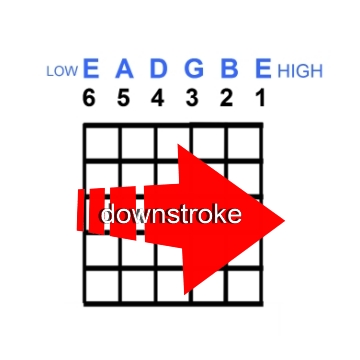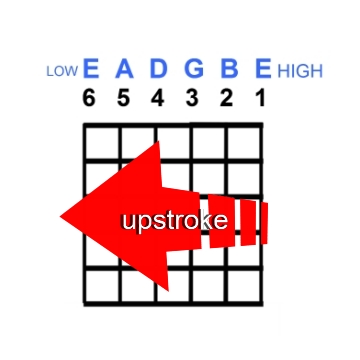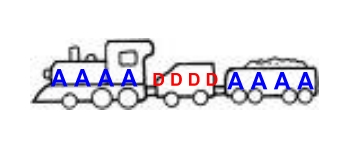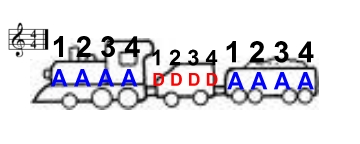BASIC STRUMMING PATTERNS
After beginners learn a few chords, their next question is:
Q:”What do I do with them?”
A: Practice switching between them.
Chords are strung together to form the “backdrop” of a song. Single-note melodies are laid on top to produce a finished piece of music. Try playing 2 chords from the BASIC OPEN CHORDS page. Strum one four times and switch to the next. Strum this new chord four times and switch back again. Here’s an example using A Major and D Major.
AAAA DDDD AAAA DDDD etc.
For now, let’s use all downstrokes.
*Downstroke means that you strum DOWN from Low strings to higher strings.
Downstroke four times on A, then four downstrokes on D. Repeat.
After awhile, you’ll notice that using downstrokes exclusively tends to make a chord progression sound “robotic” or “souless”. Think of it this way, if you only use downstrokes, its kind of like using only one leg to get around. Sure, you can hop from point A to B, but wouldn’t it be easier if you just walked to your destination? It’s much easier and smoother going. Allow me to introduce you to your other leg…
Upstrokes are the opposite of downstrokes- meaning strumming from high strings to lower ones.
The walking analogy will help us understand quite a bit about rhythm. A song starts and walks to the end in a simple fluid motion.
Let’s stop and take a look at Time Signatures.
We know that we can write down any song using TAB and standard notation. But to play it correctly, we need to understand its rhythm.
Music is written in increments known as measures.Think of these measures as train cars passing by, with the engine being the beginning and the caboose being the end.
Each of these cars carries a specific amount of beats. It’s common for each measure/car to carry four beats. So common in fact, that counting in groups of four is known as Common Time. Common time is indicated at the beginning of a piece of music by the symbol(s)
or
The earlier example of playing AAAA DDDD AAAA DDDD is a good way to explain it. Each measure/car carries exactly four beats.
In common time (4/4) we string together four beats by counting: 1 2 3 4, 1 2 3 4, 1 2 3 4,etc.
There are other time signatures that you should know about, but you’ll be fine if you start with one more. 3/4 Time
Regardless of what time signature you are in, each measure/car has to have a certain number of notes (or rests) to fill it. We call these complete measures.
explain 4/4 & 3/4. empty milk jug analogy. car, pickup, SUV, motorcycle. down & up strokes like walking. choking chords with the left hand. xxxxxxxxxxxxx






